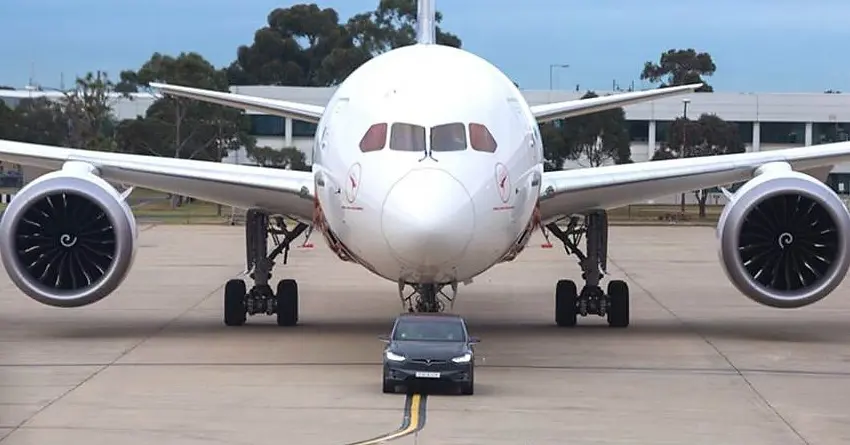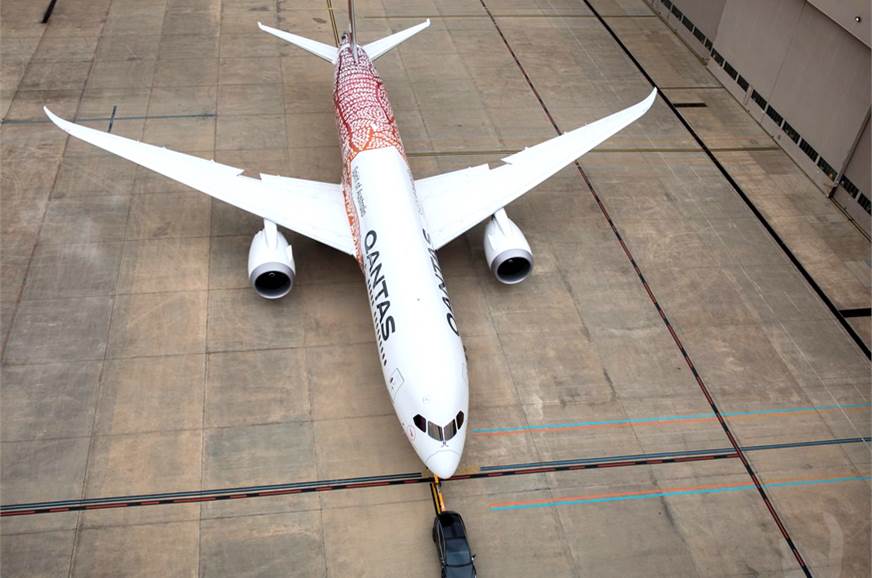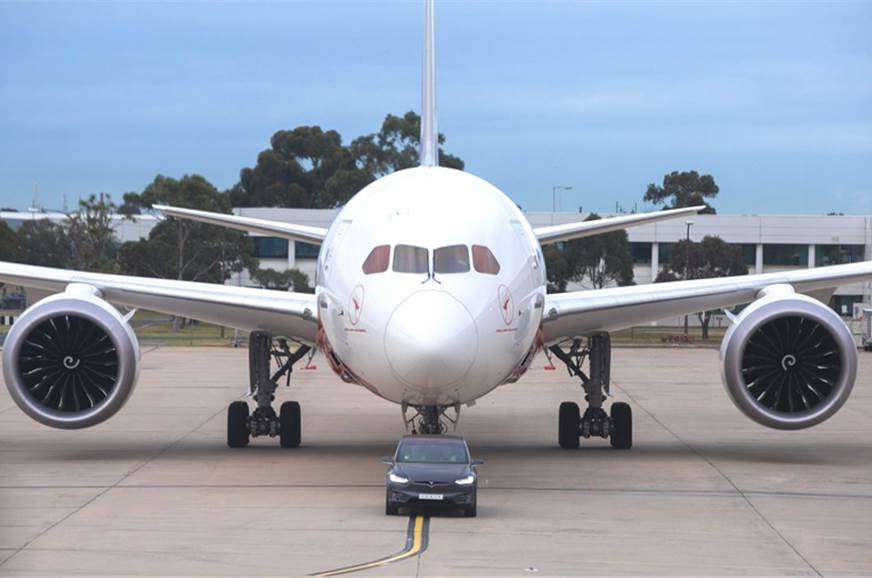 Tesla Model X Tows a Boeing 787-9 Dreamliner[/caption]
Production-spec electric cars are not made with an intention to pull such heavyweights as they are made by keeping maximum efficiency in mind. Still, the amount of power required to pull 130 tonnes was present in Tesla Model X P100D.
This typical variant is available with 1072 Nm of massive torque, that too from the first slight press on its accelerator. On the other hand, Porsche Cayenne S Diesel has 850 Nm of torque. Cars with electric drive-trains are highly efficient and thus, internal combustion engines cannot achieve this amount of perfection when it comes to pulling power.
Tesla Model X Tows a Boeing 787-9 Dreamliner[/caption]
Production-spec electric cars are not made with an intention to pull such heavyweights as they are made by keeping maximum efficiency in mind. Still, the amount of power required to pull 130 tonnes was present in Tesla Model X P100D.
This typical variant is available with 1072 Nm of massive torque, that too from the first slight press on its accelerator. On the other hand, Porsche Cayenne S Diesel has 850 Nm of torque. Cars with electric drive-trains are highly efficient and thus, internal combustion engines cannot achieve this amount of perfection when it comes to pulling power.

Video: Tesla Model X Tows a Boeing 787-9 Dreamliner
Published: Wednesday, 16 May 2018 13:08 PM | By Maxabout News | 255 Views
If you love electric cars and wish to know everything that happens to them on Earth, a new world record has arrived. This time, Tesla Model X P100D has successfully towed a 130 tonne Boeing 787-9 Dreamliner in Melbourne. The event was organized by Qantas and results were pretty impressive.
The giant airplane was towed for 300m and thus, Tesla Model X becomes the first electric car to tow such a huge plane. Petrol and Diesel-powered cars have already achieved bigger feats as Porsche Cayenne S towed a 285 tonne Airbus for 73m. Tata Hexa even towed one in 2017.
[caption id="attachment_214012" align="aligncenter" width="872"] Tesla Model X Tows a Boeing 787-9 Dreamliner[/caption]
Production-spec electric cars are not made with an intention to pull such heavyweights as they are made by keeping maximum efficiency in mind. Still, the amount of power required to pull 130 tonnes was present in Tesla Model X P100D.
This typical variant is available with 1072 Nm of massive torque, that too from the first slight press on its accelerator. On the other hand, Porsche Cayenne S Diesel has 850 Nm of torque. Cars with electric drive-trains are highly efficient and thus, internal combustion engines cannot achieve this amount of perfection when it comes to pulling power.
Tesla Model X Tows a Boeing 787-9 Dreamliner[/caption]
Production-spec electric cars are not made with an intention to pull such heavyweights as they are made by keeping maximum efficiency in mind. Still, the amount of power required to pull 130 tonnes was present in Tesla Model X P100D.
This typical variant is available with 1072 Nm of massive torque, that too from the first slight press on its accelerator. On the other hand, Porsche Cayenne S Diesel has 850 Nm of torque. Cars with electric drive-trains are highly efficient and thus, internal combustion engines cannot achieve this amount of perfection when it comes to pulling power.
 Tesla Model X Tows a Boeing 787-9 Dreamliner[/caption]
Production-spec electric cars are not made with an intention to pull such heavyweights as they are made by keeping maximum efficiency in mind. Still, the amount of power required to pull 130 tonnes was present in Tesla Model X P100D.
This typical variant is available with 1072 Nm of massive torque, that too from the first slight press on its accelerator. On the other hand, Porsche Cayenne S Diesel has 850 Nm of torque. Cars with electric drive-trains are highly efficient and thus, internal combustion engines cannot achieve this amount of perfection when it comes to pulling power.
Tesla Model X Tows a Boeing 787-9 Dreamliner[/caption]
Production-spec electric cars are not made with an intention to pull such heavyweights as they are made by keeping maximum efficiency in mind. Still, the amount of power required to pull 130 tonnes was present in Tesla Model X P100D.
This typical variant is available with 1072 Nm of massive torque, that too from the first slight press on its accelerator. On the other hand, Porsche Cayenne S Diesel has 850 Nm of torque. Cars with electric drive-trains are highly efficient and thus, internal combustion engines cannot achieve this amount of perfection when it comes to pulling power.
-


